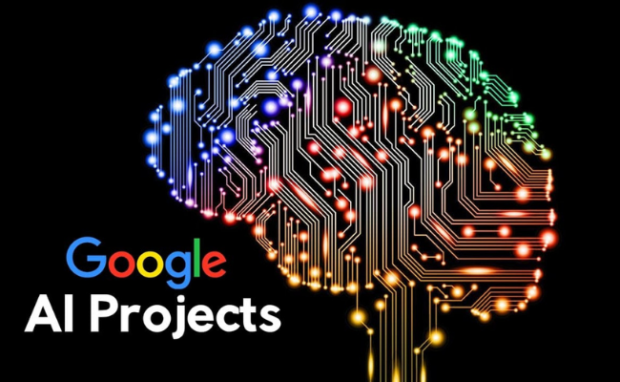Google Tailwind lets you create a personalized AI assistant
If you ever wanted to have a personal AI assistant like Jarvis from Iron Man, Google will let you make one (sort of). The company announced “Project Tailwind” at its latest I/O conference, letting users train an AI model using their data to make a virtual assistant. Moreover, it is available for beta testing in the United States.
ChatGPT blazed a new trail of innovation for artificial intelligence, allowing more ways to improve this technology. As a result, AI-powered products and services are becoming more prevalent worldwide.
Google Tailwind is the latest proof that we will all use AI daily, so we must learn more about this technology. I will cover how to test Project Tailwind on your mobile device and PC. Also, I will explain what sets this AI model apart from others like ChatGPT.
How to try Project Tailwind
🪄📓 Project Tailwind is an AI-first notebook that helps you learn faster, grounded in the information you choose and trust.
Tailwind is an experiment, and currently available in the U.S. only.
Join the waitlist → https://t.co/XQ2I0FLawt pic.twitter.com/Sc9HRYlkjw
— Google for Developers (@googledevs) May 24, 2023
This Google program is only available via a beta testing waitlist to United States users at the time of writing. Here’s how to open access to this software:
- Open tailwind.sandbox.google.com/about on your phone or computer.
- Next, click the Join Waitlist button.
- Sign in to your Google account once the prompt appears.
- Afterward, follow the onscreen instructions to finish registration.
On the other hand, you may follow another way from the tech news outlet from 9to5Google. It suggests tapping the beaker icon on the Google app to use the experimental feature.
What are the features of Google Tailwind?

Photo Credit: theverge.com
Google informed the world of its artificial intelligence projects at its 2023 I/O Conference. Aside from adding generative AI to its online search engine, it showed a demo for PaLM 2.
TechCrunch says its name is PaLM 2, the second iteration of its Pathways Learning Model. It is a large language model, the AI system that powers chatbots like ChatGPT.
Specifically, it enables chatbots to understand and generate text in multiple languages. Josh Woodward, a senior director of product management, demonstrated Tailwind on stage. Strangely, TechCrunch said Woodward didn’t specify the AI model’s purpose.
You may also like: Mercedes-Benz Tests ChatGPT For Its Vehicles
Instead, he suggested several ways people can use the system. According to 9to5Google, Woodward said it’s for “writers researching an article, analysts going through earnings calls, or even lawyers preparing for a case.” Moreover, it can help “anyone synthesizing information from many different sources.”
For example, you can submit your English lessons to Tailwind. Then, click the Reading Quiz button to generate a reviewer for your upcoming exam.
Most AI chatbots like ChatGPT rely on LLMs trained by billion-dollar companies. On the other hand, Google Tailwind uses customer data to tailor-make an AI assistant.
What are Google’s upcoming AI projects?

Photo Credit: analyticsindiamag.com
The online search company announced other artificial intelligence systems aside from Project Tailwind. Here are the ones featured in this year’s I/O event:
- AI-powered image generation software suite
- A feature that lets you try clothes digitally on YouTube
- Maya, which lets you put on shoes in 3D
- A video summarization program
- A wallpaper creation tool for Pixel phones
- An AI app builder
You may also like: Google Search Will Have Generative AI Features
Google also created an AI system that generates music called MusicLM. It can produce tunes from obscure descriptions and samples from humming and whistling.
Consequently, it can produce unique sounds that may unlock new music genres or produce nonsensical noise. Moreover, its Lens app gained new AI-powered features:
- It can detect nearby landmarks viewed through your phone’s camera.
- Also, you may point the app at a strange rash or blemish to identify potential skin conditions.
- Google Lens has a homework help filter that solves schoolwork automatically.
- Moreover, it makes shopping easier by helping you check nearby stores with a specific product.
- The Lens app can help you find nearby restaurants that offer a specific dish.
Conclusion
Google Tailwind enables users to create personalized AI assistants by submitting their data. As a result, artificial intelligence can help with daily tasks.
It is only available to US users at the time of writing. Soon, Google may enable worldwide access after further testing, research, and development.
Alternatively, you can try other AI chatbots that perform a similar role. You can read more about them by following the latest digital trends from Inquirer Tech.
Frequently asked questions about Google Tailwind
Can I use Google Tailwind for free?
You can use the experimental version of Project Tailwind in the United States. You do not need to spend money because you only need to get approved on its waitlist. However, it may take time before you can receive approval. Also, people outside may soon use the feature after further testing and development.
Should I use Google Tailwind?
Google Tailwind can help you understand one of Google’s upcoming AI projects. The final version would likely have most of the features in the beta test. However, beta tests are often prone to bugs and errors. Hence, you should not rely on this software for important tasks until the final version.
Will Google have an AI search engine?
Aside from Project Tailwind, Google announced it would add generative AI features to its online search engine. Moreover, it will replace the classic “10 blue links” layout with summary cards. These compile information from the top search results to answer user queries quickly. The company has not specified when it will release these features at the time of writing.